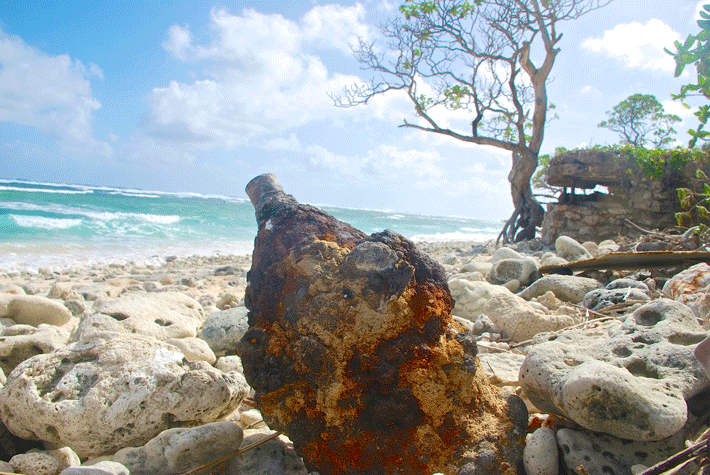Crystal-clear water laps the white sands of Wotje Atoll in the Republic of the Marshall Islands, roughly halfway between Hawaii and Australia in the Pacific Ocean. Up the beach, a line of coconut palms provides much-needed refuge from the blazing sun. It is, by any definition, a tropical paradise. Yet in the sand and scrub of these islands, being slowly revealed by wind, waves, and the daily activities of the Marshallese people, are dozens upon dozens of unwieldy metal cylinders. Many of these objects are breaking down and cracking open and leaking a lurid yellow powder. In the middle of the twentieth century, during World War II, the atolls in the Marshall Islands formed part of the eastern defensive line of the Empire of Japan. The metal objects are unexploded bombs and projectiles from that time—dropped, buried, or hidden, and forgotten by the outside world—known as explosive remnants of war (ERW). Time and the tropical climate have left the ERW deteriorating, toxic, and volatile. Accidental detonation and chemical leakage pose serious threats to islanders and to local historic sites.

